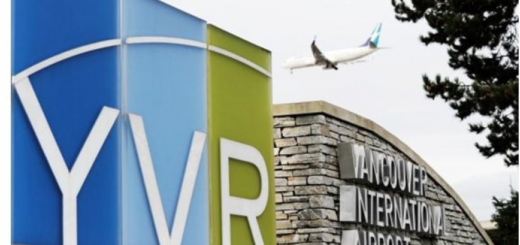Ontario Court of Appeal Struggles to Land Public Interest: Release of CVR Ordered in Société Air France v. NAV Canada
On September 17, the Court of Appeal for Ontario (“OCA”) released its decision for Société Air France v. NAV Canada, 2010 ONCA 598, ordering production of the Air France Flight 358 aircraft’s “cockpit voice recorder” (“CVR”) to the litigation parties. The CVR was previously held under statutory privilege. The decision confirmed the order made by Justice Strathy of the Superior Court of Justice in Société Air France v. Greater Toronto Airports Authority, 2009 CanLII 69321, released December 9, 2009.
This case presents an interesting analysis of a legal issue that travelers do not usually think about but of which most are well aware – the airplane “black box.”
It started with a thunderstorm and a black box
On August 2, 2005, Air France Flight 358 overshot the runway while landing during a severe thunderstorm at Pearson International Airport in Toronto. The plane, which had pitched into the ravine and burst into flames, was completely demolished. Although all the passengers and crew escaped, several people were injured, some critically.
The Transportation Safety Board of Canada (“TSB”), an independent government agency dedicated to advancing transportation safety, was charged with investigating the accident. It retrieved the CVR at the scene. After conducting an extensive investigation, which included interviewing the pilots and the crew with the help of the CVR, the TSB released its report in December 2007. The TSB is statutorily prevented from assigning fault or civil liability. However, although it did not quote the pilots’ conversation recorded by the CVR, it did suggest that acts or omissions committed by the pilots might have contributed to the crash. The CVR continued to remain in the TSB’s possession.
A number of lawsuits ensued, including a class action launched by a group of passengers and a multi-million dollar lawsuit brought by Air France against the Greater Toronto Airports Authority, NAV Canada (responsible for air traffic control), and the Attorney General of Canada.
Statutory privilege granted to “on-board recordings”
Section 28 of the Canadian Transportation Accident Investigation and Safety Board Act (the “Act“) states that every “on-board recording,” which includes CVRs, is privileged and can be produced solely to a TSB investigator who requests it for the purpose of an investigation.
According to Justice Strathy, there are two main reasons for privileging on-board recordings. The first is to protect the pilots, whose privacy and dignity are already infringed by the placement of a recording device in their workplace. The second is to ensure that the TSB can obtain frank and complete disclosure from any person with knowledge of the incident, without having to consider that that person might tailor their statement based on potential personal consequences. This allows the TSB to carry out comprehensive and thorough investigations.
In the course of this litigation, NAV Canada moved for the production of the CVR pursuant to s. 28(6) of the Act. The section states,
Notwithstanding anything in this section, where, in any proceedings before a court or coroner, a request for the production and discovery of an on-board recording is made, the court or coroner shall
(a) cause notice of the request to be given to the Board [the TSB], if the Board is not a party to the proceedings;
(b) in camera, examine the on-board recording and give the Board a reasonable opportunity to make representations with respect thereto; and
(c) if the court or coroner concludes in the circumstances of the case that the public interest in the proper administration of justice outweighs in importance the privilege attached to the on-board recording by virtue of this section, order the production and discovery of the on-board recording, subject to such restrictions or conditions as the court or coroner deems appropriate, and may require any person to give evidence that relates to the on-board recording.
In this and other cases involving the release of the CVR, courts are charged with the task of weighing the public interest against the importance of CVR privilege.
OCA: Public interest prevails over privilege for Air France Flight 385
The OCA, in agreeing with Justice Strathy, ruled that the trial court made no error of law and that, in accordance with s. 28(6), the public interest component of this case outweighed the importance of the privilege attached to the CVR.
Although Justice Strathy (and, subsequently, the OCA) considered several factors in balancing public interest against the importance of privilege, the decisions of both courts hinge on three of Justice Strathy’s findings.
(1) The TSB used the CVR to refresh the pilots’ memories while interviewing them. Having the pilots testify at trial without the aid of the CVR may make for less reliable evidence.
(2) The CVR contains no personal communications. One of the pilots consents to its release and the other takes no position.
(3) There is no evidence that the production of the CVR would interfere with aviation safety or cause pilots to restrict communication in the cockpit. There is also no evidence that it would impede future investigations.
Both courts render a defensible decision but leave a cloud of dust for statutory interpretation
Both courts appear to have arrived at a justifiable outcome, especially given the context of this case. The case involves some substantial litigation, including over 300 people and hundreds of millions of dollars. Neither pilot of AFR 358 objected to the production of the CVR. Justice Strathy found that an order for production was unlikely to interfere with aviation safety. The Act prevents on-board recordings from being “used against” aircraft crew members for legal or disciplinary proceedings (see s. 28(7)), and the CVR would only be made available to the litigation parties.
In essence, it seems – and both the OCA and Justice Strathy appear to suggest – that no harm would be done in releasing the CVR. If production were to effect any change, it would be for the better, in helping to elucidate contested facts and improve the reliability of the pilots’ evidence.
The decision is at least defensible, but both courts err in the setup of their analysis and their focus on harm, rather than public interest. This leaves behind some confusion about statutory interpretation, the importance of privilege, and the role of the s. 28(6) public interest exception.
Despite the lip service paid to privilege, the approach of both the OCA and Justice Strathy seems to overlook that the public interest test laid out in s. 28(6) is the exception, not the rule. The primary focus of Justice Strathy’s analysis is the potential harm that could be caused by releasing the CVR. The conclusion is made that the production of the CVR is unlikely to bear any ill effects, necessitating the decision that its release would only assist the development of the case. However, the Act is designed first to protect the privilege of on-board recordings. The exception in s. 28(6) should be applied where their release would be important for the public interest, not merely where producing the CVR would generate little harm. Otherwise, s. 28(6) would be in danger of being exercised in any situation where the potential harm generated by the release of on-board recordings could be minimized. Privilege would no longer be the governing rule, and public interest would no longer be the focus of s. 28(6). The test would have changed.
In this case, both court decisions fall short of delineating how the production of the CVR holds significant public interest. It is unquestionable that the CVR would be a relevant aid rather than an impediment to the “search for the truth.” This could be said of any case. The finding, therefore, that releasing the CVR would simply help improve the reliability of the pilots’ evidence seems to hold insufficient weight to exercise the s. 28(6) order. Moreover, the courts do not defend that any evidence concealed in the CVR is particularly unique or vital to the disposition of this case. In fact, they state that there is “a large volume of evidence from other sources” and that the main purpose of the CVR would be to “refresh the pilots’ recollections.”
Defining “public interest” still a leap in the dark
Finally, the OCA decision only generates more ambiguity surrounding the notion of public interest, particularly with respect to s. 28(6). Justice Strathy writes that it “goes beyond the [unfairness] test under Rule 30.01(1)(b)” of the Rules of Civil Procedure. Yet, contrary to past provincial and federal court decisions (reviewed in paras. 74 to 109 of Justice Strathy’s judgment), both courts assert that a party requesting a s. 28(6) order need not establish that a miscarriage of justice would occur if the CVR were not produced.
Instead, this decision and its treatment of court precedent muddles the water of what exactly constitutes the public interest component mandated. Justice Strathy ultimately defines “public interest in the proper administration of justice” as
the public interest in the fairness of the trial process – a trial in which the party can fairly make out its case and can fairly meet the case of the other party… [It] includes an interest in the integrity of the judicial fact-finding process and the reliability of the evidence before the court.
This definition does not merely cast an exceptionally wide net. It also appears oddly similar to the unfairness test outlined in Rule 30.01(1)(b), a test that Justice Strathy had earlier insisted was inadequate to meet the public interest requirement.
Rather, the new definition proposed by Justice Strathy and implicitly affirmed by the OCA, together with the courts’ interpretation of s. 28(6), delineate a new threshold for the public interest requirement – one that is significantly lower, more ambiguous, and which may result in a demoted regard for the importance of a privilege vested by the Legislature.







Join the conversation